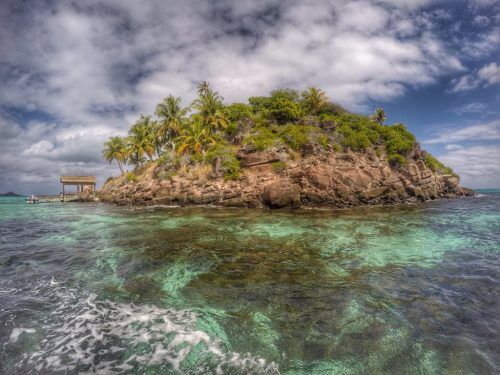Before climate change floods small islands in the Pacific and elsewhere around the world, it could dry up their drinking water

By Assaf Ben Naria, Angle - Science and Environment News Agency
It's not easy being a small island these days. study recently published in the journal Nature Climate Change examined the state of groundwater in 43 small island developing countries around the world. The study revealed that climate models show that on most of the islands, 311 out of all those examined, the groundwater recharge rate is expected to decrease by about 60 percent, and only on 12 islands is a 17 percent increase in groundwater that can be pumped and used.
Climate researchers predict that during the 21st century "wet" areas (those with relatively high amounts of rain) will indeed receive an increase in rainfall, but Dry areas will suffer from a decrease in rainfall and will become even drier. Climatic models show that the reason for the decrease in precipitation in the dry areas is due to a change in wind movement on a global scale, a change that originates from global warming. For small and isolated islands, this is sometimes a severe blow, since the possibility of compensating for the loss of rainfall by relying on alternative water sources, or alternatively laying a pipeline to transport water from a place where it is abundant, is simply not possible.
Freshwater lens
Today, many islands still depend solely on the rains that fall over them. The infiltration of rainwater into the ground creates a "lens" of fresh water, the depth of which is the depth of the bottom of the aquifer or the impermeable layer on which the water "rests". The hydraulic pressure, the water pressure, of the lens prevents the entry of salt water from the sea that surrounds the island. The greater the thickness of the layer, the smaller the possibility of saltwater infiltrating the fresh groundwater.
The problem begins when the amount of precipitation over the island decreases and when water loss as a result of evaporation increases (in hot and dry conditions the evaporation potential increases) together with an increase in pumping and use as a result of an increase in the population. If in such a situation groundwater pumping continues, then the groundwater level will go down - just like a pool that is getting empty. With the drop in the groundwater level, the water pressure drops and the fresh water lens - the protective wall against the intrusion of salty sea water - cracks. When the salty water enters a freshwater reservoir it is very difficult to restore the situation to its original state, and parts of the aquifer become unfit for drinking, even after an improvement in the rainfall situation.
adapt to the new situation
Already today, close to half of the examined islands are defined as suffering from a water shortage - also due to overuse of the existing water sources. The decrease in rainfall over the islands could worsen the situation on many other islands in the near future. As part of their conclusions, the researchers emphasize that the policy makers in the islands need to internalize the situation and adopt a strategy to properly deal with the depletion of water sources: more correct management of groundwater, avoiding over-pumping, changing land uses and adapting agricultural crops to the new climate.
Warm weather and clear skies may help the tourism industry on small and exotic islands around the world, but climate change will require the permanent residents there to significantly change their lifestyle and prepare today for the problems that tomorrow brings.

One response
All the islands on earth should be immediately evacuated to the continents close to them, the people there are in grave danger and it is better to do the evacuation in a gradual way and as less traumatic as possible for the inhabitants and not wait for the last moment when they will become refugees.